Steckerlfisch is a grilled fish on a stick immensely popular in Bavaria and Austria. It is an iconic beer garden menu food item and many know it as Oktoberfest fish on a stick because it is one of the best loved specialties offered on the Wiesn every year.
Go straight to the Recipe Card or
Read on for relevant information and step by step pictures and video (2 mins)
Visit Munich, Bavaria’s principal city for Oktoberfest and you are sure to see the Bavarians enjoy Steckerlfisch. It captivates with its delicious smell, has incredible affinity for Bavarian and Austrian lagers and its flavor is sooo addictive you will not rest until you are staring at a head, bones and a tail. Tried and true.
Read about our very first personal experience enjoying fish on a stick at the Salzburg St. Rupert’s fest at the end of the post if you are interested.
What is Steckerlfisch?
Steckerlfisch is a grilled fish on a stick. In Bavarian dialect the word ‘Steckerl’ means little stick or pole.
A whole fish, gutted and cleaned is threaded onto a thick, angular shaped stick and suspended over hot embers to cook. Typically, the suspension is at an angle with the head of the fish closer to the embers and the tail slightly higher.
Often times the fish are horizontally suspended over the wood charcoals and sometimes the grills are constructed in such a ways as to incorporate both diagonal and horizontal suspension as seen below.
The heat from the charcoal fire embers cooks the fish and the aromas wafting from around a steckerlfisch grill are ridiculously tantalizing.
If you enjoy fish it is virtually impossible to pass on steckerlfisch.
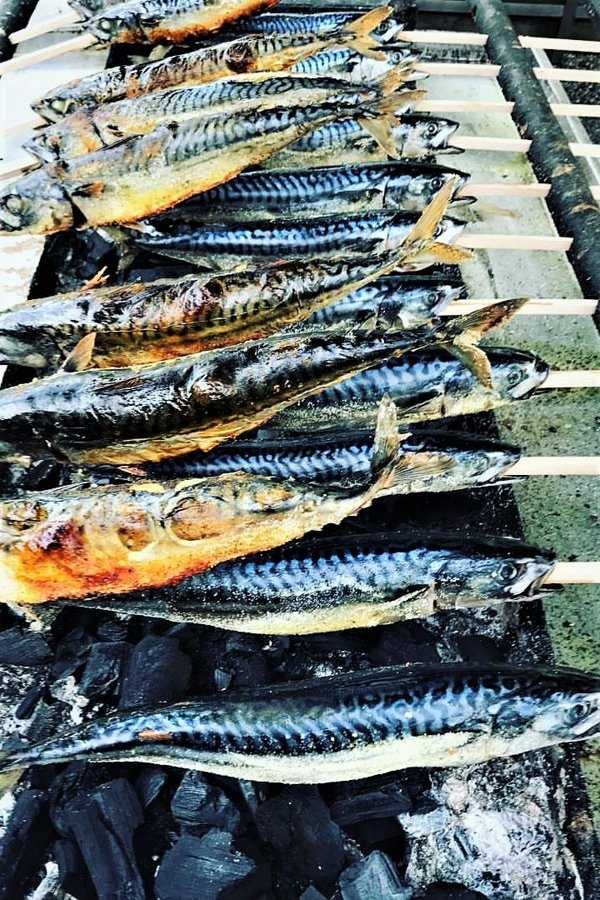
Steckerlfisch are cooked over embers in beer gardens and folk fests. Picture credit: unknown.
History of Steckerlfisch
Obviously the real history of fish on a stick begins the instant our earliest predecessors adopted cooking over fire and hot embers. In terms of organized mass preparation of Steckerlfisch for the singular purpose of enjoying it with a cold beer – it all began around 1902.
The lakes and rivers of Bavaria provided a lot of fresh fish and beer halls and gardens began to cook the fish hunter style and serve it to their patrons. They began using especially constructed grills filled with wood embers and slots to suspend the fish.
Steckerlfisch quickly became symbolic of Bavarian and Austrian folk fests and fairs.
Initially trout and fresh water whitefish were used. Refrigeration and better transportation made salt water fish such as mackerel and char available and today mackerel is the most commonly prepared steckerlfisch.
How to Prepare Steckerlfisch
What you will Need
Everything about making fish on a stick proved quite easy except for actually finding the stick!
The traditional sticks used in Bavaria have an angular square profile and are quite sturdy. The angular shape facilitates positioning the fish over the embers. In the earliest days willow branches of appropriate thickness were used, neatly trimmed with a knife.
If you can fashion your own sticks – do it. They need to be about 30 inches long and sharpened on one side so you can easily push the pointy end through the flesh of the fish, just above and along the spine.
Otherwise consider smores/grilling sticks – the sturdier the better. We ended up using two smores skewers per fish because they were on the thin side while the fish were almost 3 pounds each. An added inconvenience was the rounded shape as it made it more difficult to position the fish, but eventually we got the hang of it.
You will also need to prepare charcoal briquettes to white embers. Use a chimney starter for best results and follow the manufacturer’s instructions.
Use a charcoal burning grill or a wood burning fire pit that you can position and mount the sticks around. The radiant heat from the embers will cook the fish. The embers should not be smoking. Wait until they stop smoking and place the fish.
Overall – be resourceful and enjoy yourself. Grilling fish on a stick and eating it out of paper is meant to be fun. Follow the steps outlined in the recipe below.
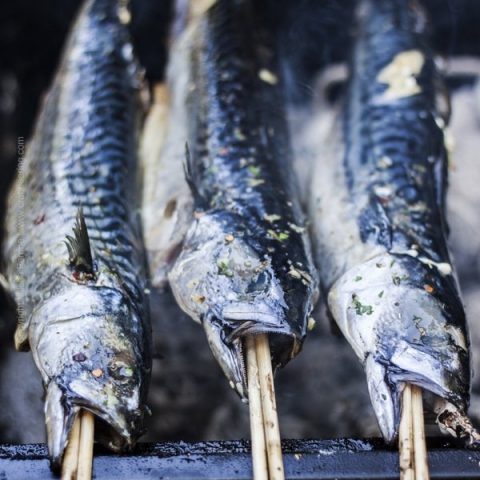
Steckerlfisch aka Bavarian Fish on a Stick
Steckerlfisch is a flavorful grilled fish on a stick popular in beer gardens and folk fests in Bavaria and Austria. The fish is cooked suspended over wood embers and is served wrapped in paper with a squeeze of lemon juice.
Ingredients
- 3-4 whole 2 1/2 to 3 lbs each fish (mackerel, trout, etc), gutted and clean; head, tail and fins on
For Marinated Version
- 1 cup olive oil
- 2 large cloves garlic, minced
- 1 lemon (zest of), keep the fruit for squeezing juice
- 1 tbsp oregano
- 1 tbsp finely chopped parsley
- 1 tbsp salt
- 1 tsp red pepper flakes
- 2 lemons, sliced in wedges
For Flour Dusted Version
- 1 lemon - juice of
- 1 tbsp salt
- 1 tsp white pepper
- 1/4 cup flour
- optional - once the fish is cooked and off the stick, brush with olive oil and place a couple of thin lemon slices inside the belly, then wrap in paper to serve
Instructions
- A few hours before grilling the fish (overnight recommended) soak the roasting sticks/long wood skewers in water.
- When ready to grill start the charcoals and wait until they turn white. In the meantime prepare the fish per one of the two methods below.
For Marinated Version
- In a mixing bowl add the olive oil, minced garlic, lemon zest, oregano, chopped parsley, salt and red pepper flakes. Mix well together.
- While supporting each fish with one hand near the tail insert the roasting stick through the mouth and with slow and firm motion continue threading forward through the flesh right above the spine until the stick comes out near the tail. If you are using smores sticks, insert a second stick right next to the first one for better support.
- Generously brush the fish inside and out with the marinade.
- Position the skewered fish over charcoals (about 12 to 16 inches above embers). You can do so on the diagonal or horizontally, depending on your available options.
- Grill the back first, then turn to grill each side and finally the belly. The fish are ready when the skins begin to get crispy - it takes between 15-25 minutes, depending on the size of the fish, how hot the charcoals are and how far above them the fish are positioned.
For Flour Dusted Version
- Skewer the fish as described above.
- Drizzle lemon juice on the inside of each fish. Season with salt and white pepper both inside and outside. Let rest for 15 minutes.
- Dust the fish with flour and grill as described above.
Notes
Both methods described in this recipe are quite popular.
If you are having trouble skewering the fish you can use thin wire to secure them to the grilling sticks.
Nutrition Information:
Yield: 4 Serving Size: 1Amount Per Serving: Calories: 499Total Fat: 337gSaturated Fat: 68gTrans Fat: 0gUnsaturated Fat: 256gCholesterol: 212mgSodium: 166mgCarbohydrates: 206gFiber: 24gSugar: 87gProtein: 969g
Two Ways to Suspend the Fish Over Charcoals
At fests and in beer gardens it is very typical to stand up the sticks with the fish on diagonally over the embers, as in the pictures above. The head is always situated closer to the embers as there is more meat in that area while the tail end has less and will cook faster.
Very often the fish are positioned horizontally. We were able to do both ways on our gas/charcoal grill and smoker combo, but the horizontal way proved easier for rotating the fish in the absence of a square stick. If your grill has an adjustable firebox use it to adjust the height of the fish over the embers. About 12 to 16 inches is recommended based on how big the fish are.
As noted in the recipe – grill the backs of the fish first, then the sides and finally the belly (because it cooks the fastest).
How to Serve Fish on a Stick
Typically the cooked fish is removed from the stick, wrapped up in paper and handed to the patron. Sometimes in the more civilized setting of beer halls steckerlfisch is plated and served with lemon wedges and a soft Bavarian pretzel.
So – yes, you can eat the fish with fork and knife but it is truly meant to be finger food. The most enjoyable part of the experience (besides the flavor) is the fact that you get to tear pieces of the aromatic, tasty flesh and literally lick your fingers after you eat them. If you ask us this is definitely the way to go.
You Should Know
For something as simple as grilling a fish on a stick we were astounded to encounter so many different opinions, tips and tricks. I suspect this is what happens when a food item is so well loved.
After researching approximately four thousand Bavarian and Austrian recipes, watching a similar number of cooking videos and reading copious amounts of comments by actual Germans and Austrians we were able to identify several key topics subject to (sometimes heated) debate and I am summarizing them here.
- Marinade ingredients vary. Some swear that you have to use paprika in the marinade. Others label such an action as steckerlfisch blasphemy and recommend the use of cumin. Rosemary, parsley and thyme are also strongly recommended. So prepare your marinade with whatever pleases you. We loved Chris’ with the little bit of lemon zest and red pepper flakes.
- Sometimes the fish is marinated for half an hour prior to being grilled and sometimes it is simply brushed with marinade. Because we used Norwegian mackerel which has a good fat content Chris assured me that simply brushing it with the oil and seasoning marinade is sufficient. Of course he was right – the mackerel we enjoyed was as moist as you can imagine.
- Many recipes call for squeezing lemon juice over the inside flesh of the fish, seasoning it with salt and white pepper only and letting it rest. Then the fish is dusted with flour so as to form a crispy coating while grilled. No oil involved at all. Except for in the very end and that is optional (see recipe or our brief story at the end of the post).
- For tips on how to remove fish smell from your hands after handling and eating fish check out the relevant part of our Fried Anchovies post.
Where to Get the Fish
Look for farm raised whole trout or mackerel such as Norwegian catch. If fresh whole fish is not readily available where you shop you can usually find them at Asian or other ethnic markets markets.
We hope to have convinced you to grill some tasty Oktoberfest fish on a stick. Here is how we got hooked on it.
Our Very First Steckerlfisch
Once upon a time Chris and I were driving around Austria without any concrete purpose other than to see, taste and experience as much as we could. We stayed in Vienna, in small villages through the countryside and by beautiful lakes in the Alps. If you’d like to see a beautiful, clean and ultra organized country with rich history – visit Austria.
One day we ended up near Salzburg and since neither one of us had been there decided to stay for a few days. We spent the first five hours after we drove into the city looking for a place to stay. It was the first day of St. Rupert’s fair we were told, a major local festival in honor of the saint who founded the city. In the old days as soon as you built a church you could establish a city and Rupert did exactly that and was later on canonized.
Finding accommodation in the Old Town was out of the question. So we strolled around the part of the new town nearest the river and the Old Town and even though there were tons of hotels all that we could find were penthouse suites for a gazillion euro per night and with three night minimums. In our desperation we almost agreed to one but since we were at the end of our month long trip our savings had dwindled.
We decided to look just a bit longer… and miraculously walked into an NH hotel where there had just been a cancellation! Four nights for an actually reasonable rate and within walking distance of the main bridge to Old Town. Boy did we celebrate with a great dinner and Schnapsen at a fair stall with a spirited Austrian couple we met as our guides.

Picture credit: https://mustseeplaces.eu/europes-foremost-music-festival/
St. Rupert’s fair is a spectacular festival. It occupies the main square and several adjacent squares and walking streets in the Old Town and it goes on for several days. People make their reservations a year ahead of time. The fair has a huge beer tent, a carnival, many street food and souvenir stalls. It is truly amazing. Especially at night when everyone is out celebrating . It also has a heavy focus on music (Salzburg is the birth place of Mozart).
On day two we spent the morning exploring the local castle, Hohensalzburg Fortress (bucket list kind of place, perched on a hill) and as soon as we descended back into town we smelled steckerlfisch for the first time. It was not hard to find the stall selling it.
Those very first steckerlfisch we tasted had been dusted with flour and the skin was extremely crispy. The lady took the two fish we chose from the grill, placed them onto a pile of paper near the tiny check-out table and swiftly pulled out the sticks. She then brushed each fish with olive oil and placed several lemon slices inside the bellies. She wrapped them up in paper and handed them to us.
We could barely wait the maybe three minutes it took to buy two steins of beer and sit down at the wooden tables in the center of all the stalls to eat.
Definitely a food experience we won’t forget. We will definitely go back to St. Rupert’s fair as soon as our son is of age to drink beer:)
Once you find yourself in the presence of a steckerlfisch I really think that you will not stop eating until all that is left a head, bones and a tail.
This post contains affiliate links which help support our blog at no cost to you.

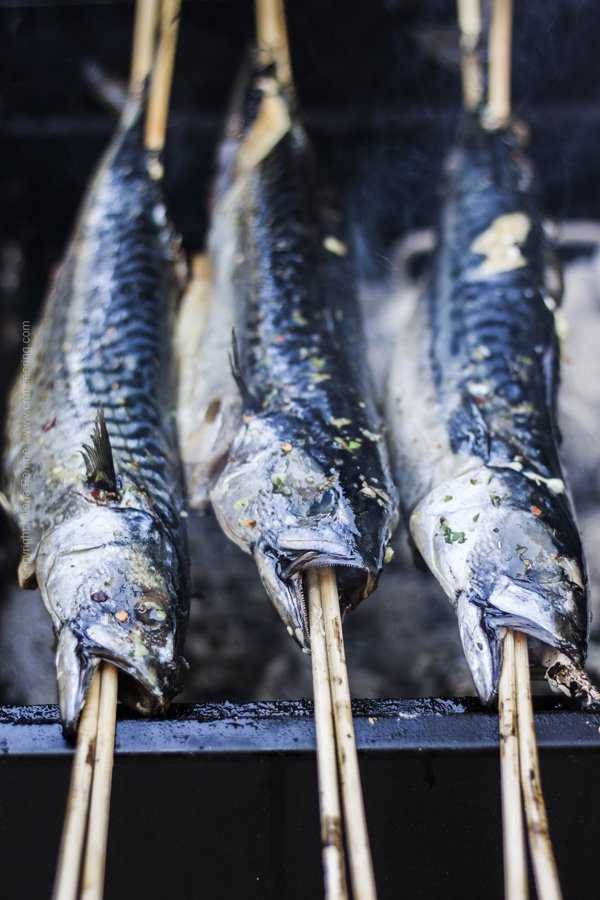
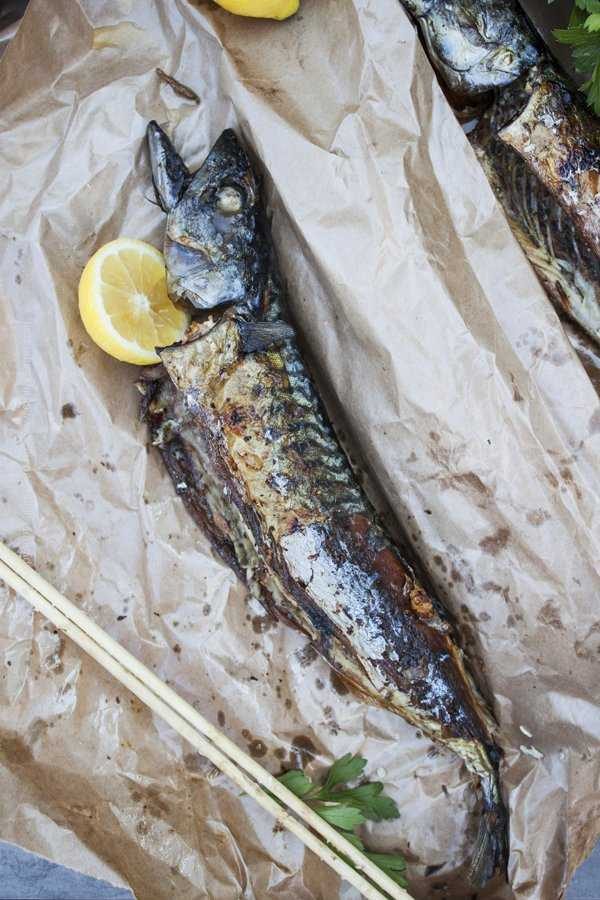
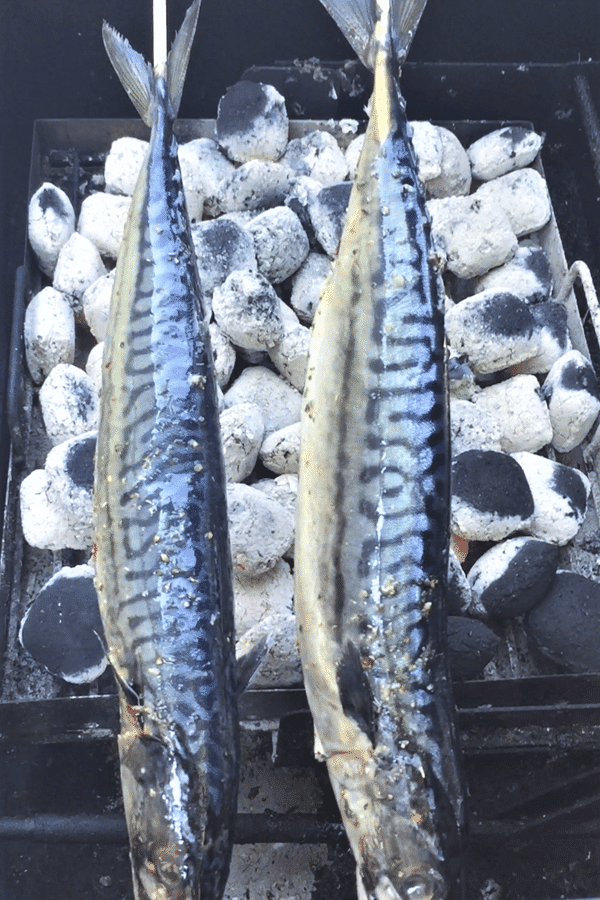
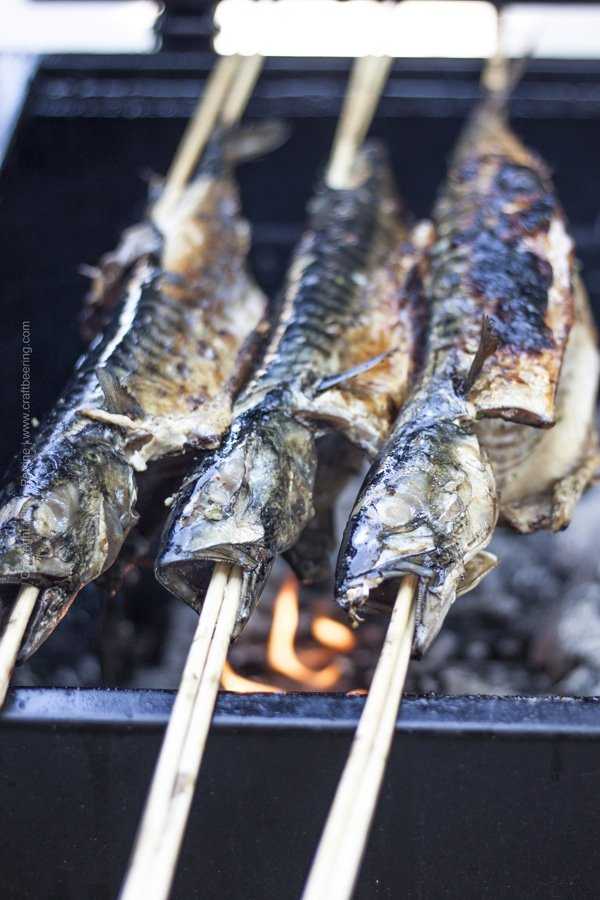
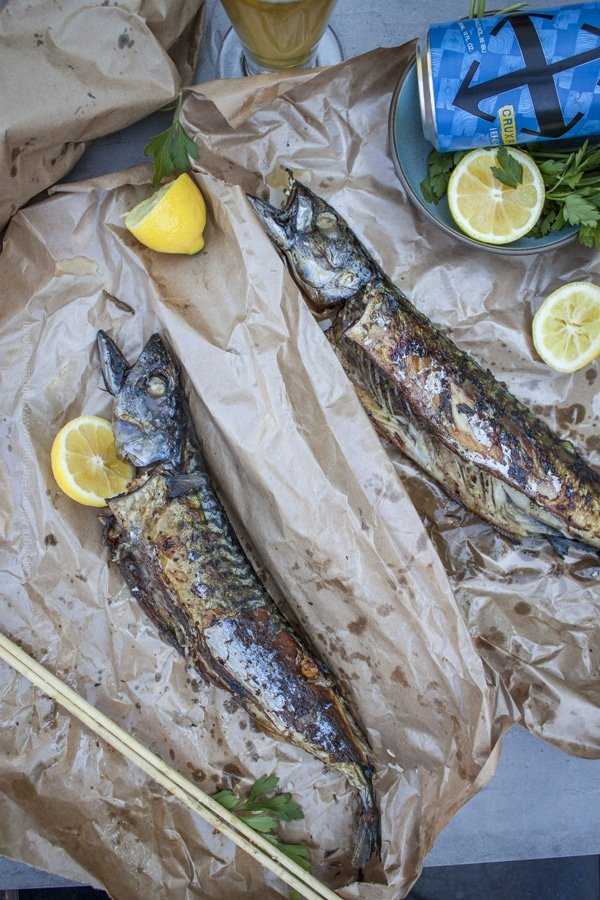

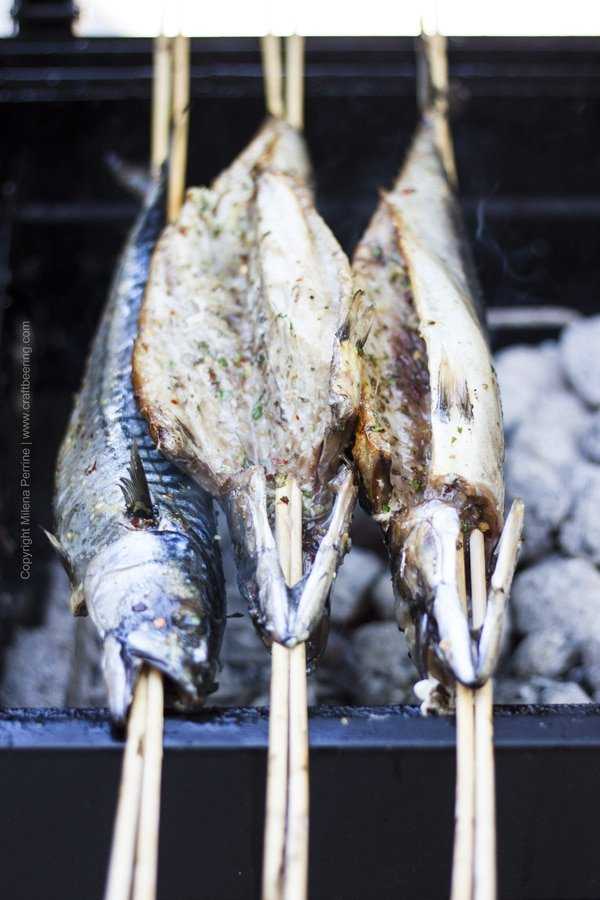
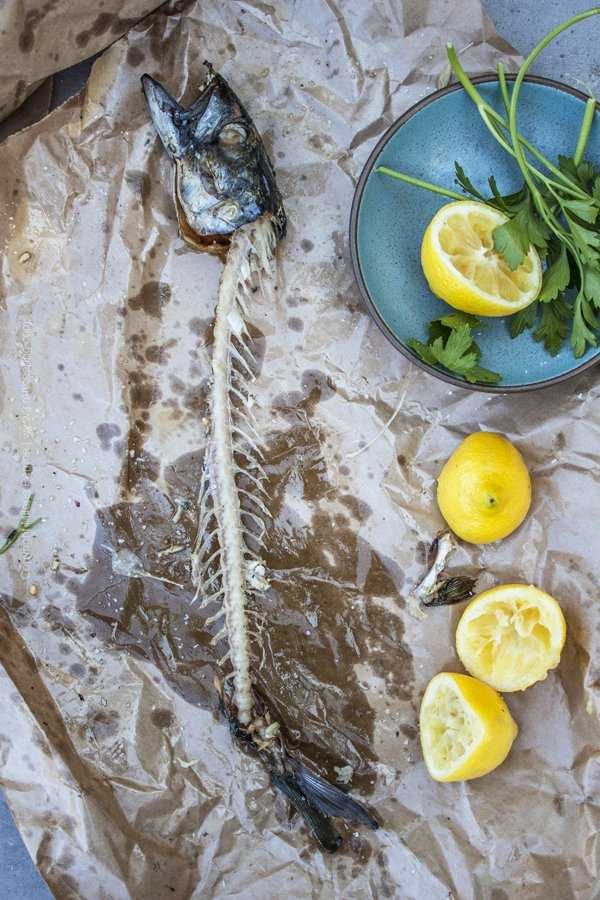
David says
No idea how I ended up here! I lived in Munich for 4 years while studying at Weihenstephan, and Steckerlfisch, a bretzen, and a masskrug of Augustiner were absolutely the my favorite way to enjoy the evenings…
CraftBeering says
A bit jealous to hear:) and absolutely can identify with the magic of the experience. Thank you for stopping by!
Kelly Lynns Sweets and Treats says
Anything on a stick is always good! How fun are these fish on a stick though?!?! What a yummy bar snack to enjoy with beer! XOXO
CraftBeering says
Really fun:) True.
Neha says
Never heard of steckerlfisch, but is sounds super appetizing! Loving all those bbq clicks here.
Helen at the Lazy Gastronome says
Thanks for sharing at the What’s for Dinner party – have a fabulous week!
Dawn says
Like Kelsie, I’ve never heard of steckerlfisch, but would certainly give it a try! Your pics always make me want to reach through my screen. Love that there’s a couple of versions, marinated and flour dusted…I bet both are delish! Thanks for another yummy recipe, you guys 🙂 Have a wonderful week!
CraftBeering says
Thank you, Dawn! Yes, I think that both are delicious, the flour dusted one is a bit crispier but overall very similar results. We are on a mission to fashion better roasting sticks so we can make this more often. So good and so easy. Have a great week yourself!
Kelsie | the itsy-bitsy kitchen says
I’ve never heard of steckerlfisch, let alone eaten it, but food on a stick is just more fun to eat, isn’t it? I’ve never been to Vienna either, but definitely want to go someday. I think I’ll have to schedule my trip to coincide with the St. Rupert festival. It sounds like so much fun!
CraftBeering says
Yes, Vienna is an amazing city – you’ll love the Sachertorte:) but St. Rupert’s fair in Salzburg is also not to miss. I just love how casual everything is and all the people walking around, eating the delicious food and having beer and great conversations..Definitely must go back.
lewis says
yum yum yum yum fish on a stick tastes so good it reminds me of the slurp fish from fortnite would recommend